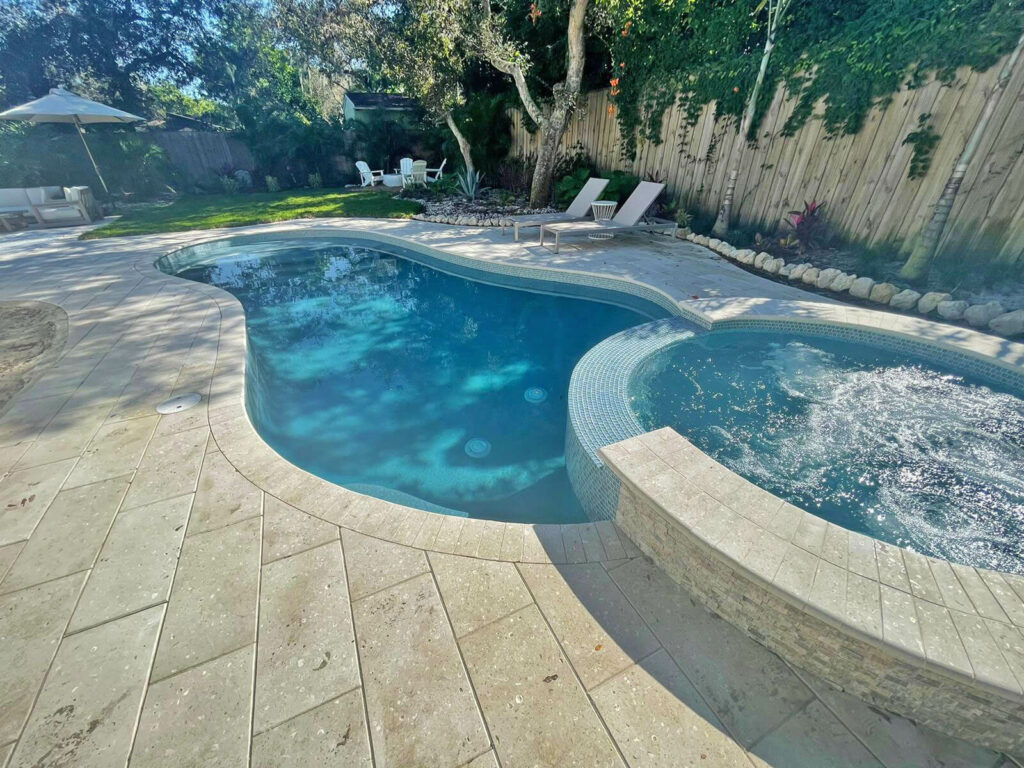How deep can a pool be? When designing your dream pool, determining the ideal depth is one of the most critical decisions you’ll make. To help you make an informed decision, this blog post will provide an in-depth discussion of pool depths, considering safety, functionality, and aesthetics.
Table of Contents
Factors to Consider When Choosing Pool Depth
Before we dive into the specifics of pool depths, it’s essential to consider the factors that can impact your decision. These include:
- Purpose: Understanding the primary purpose of your pool is crucial. Will you be using it for swimming laps, diving, playing pool games, or simply lounging around? The intended use will significantly influence the ideal depth.
- Safety: Safety should always be a top priority. Consider the ages and swimming abilities of those frequently using the pool. A too deep pool can pose a safety risk for young children and inexperienced swimmers.
- Budget: Deeper pools typically require more excavation, materials, and labor, which can result in higher costs. Be sure to factor in your budget when determining the appropriate depth.
- Maintenance: Deeper pools may require more maintenance, as they have more water to clean and maintain. Keep this in mind when deciding on the depth of your pool.
Understanding Pool Depth Zones
Pools can be divided into three primary depth zones: shallow, middle, and deep. Each zone serves a specific purpose and can cater to different activities. Here’s a closer look at each zone:
- Shallow Zone (3-4 feet deep): The shallow end is perfect for young children, inexperienced swimmers, or those who prefer to wade or lounge in the water. This area can also be used for water aerobics or other low-impact exercises.
- Middle Zone (4-5 feet deep): This depth is ideal for swimming laps, water games, and general swimming activities. Most adults can comfortably stand in this depth, making it a versatile and functional pool area.
- Deep Zone (8 feet deep and beyond): The deep end suits diving or advanced swimming activities. It’s essential to ensure proper safety measures, such as installing a diving board or slide according to the manufacturer’s specifications and adhering to local regulations.
Diving Pools: Depth Requirements and Safety Considerations
If you want to incorporate a diving board or slide into your pool design, you’ll need to meet specific depth requirements to ensure safety. According to the American National Standards Institute (ANSI) and the Association of Pool and Spa Professionals (APSP), the minimum water depth for a residential diving pool is 8 feet.
However, depth alone is not the only consideration. You’ll also need to consider the “diving envelope,” which refers to the slope and shape of the pool floor in the deep end. The diving envelope should provide ample space for divers to enter the water without the risk of hitting the bottom or sides of the pool.
Sport Pools: Combining Functionality and Versatility
Sport pools are a popular choice for those who want to combine the best features of shallow and deep zones. These pools typically have a depth of 3-4 feet at each end and a deeper middle section of around 5-6 feet. This design allows for various activities, such as volleyball, basketball, or even water aerobics, making it a versatile option for families or those who enjoy entertaining guests.
Aesthetic Considerations: Infinity Pools and Beach Entry Pools
Pool depth can also play a significant role in the overall aesthetic of your pool design. Two popular styles that utilize depth to create visual interest are infinity pools and beach entry pools.
- Infinity Pools: Also known as vanishing edge or negative edge pools, infinity pools create a visual effect where the water merges seamlessly with the horizon. These pools typically have a deep end of around 5-6 feet and a shallower area for lounging. The depth gradient enhances the optical illusion, extending the pool infinitely.
- Beach Entry Pools: Mimicking the gradual slope of a natural beach, beach entry pools have a gradual depth increase that allows swimmers to walk directly into the water without steps or ladders. This design is perfect for creating a resort-like atmosphere and can be an excellent option for children or individuals with mobility issues. The depth typically ranges from a few inches at the entry point to 5-6 feet at the deepest point.
Local Regulations and Building Codes
Knowing your local building codes and regulations is crucial when determining your pool’s depth. These rules can vary depending on your location and may dictate the minimum and maximum depths and specific requirements for diving pools or other special features. Always consult your local building department and a professional pool builder to ensure your pool design meets all necessary regulations.
The Role of Professional Pool Builders
Choosing the ideal pool depth is a complex decision that requires careful consideration of various factors. To ensure you make the best choice for your needs, it’s highly recommended to consult with a professional pool builder. These experts have extensive knowledge and experience in pool design, construction, and safety requirements. They can guide you through the process, helping you create a pool that meets your needs, budget, and aesthetic preferences.
Conclusion: How deep can a pool be?
In conclusion, the depth of your pool is a critical aspect of its design, function, and safety. By carefully considering the intended use, safety concerns, budget, maintenance, aesthetic preferences, and local regulations, you can make an informed decision that will enhance your enjoyment of your new pool. Consult a professional pool builder to ensure your pool design meets all necessary standards and provides the optimal swimming experience for you and your family.

